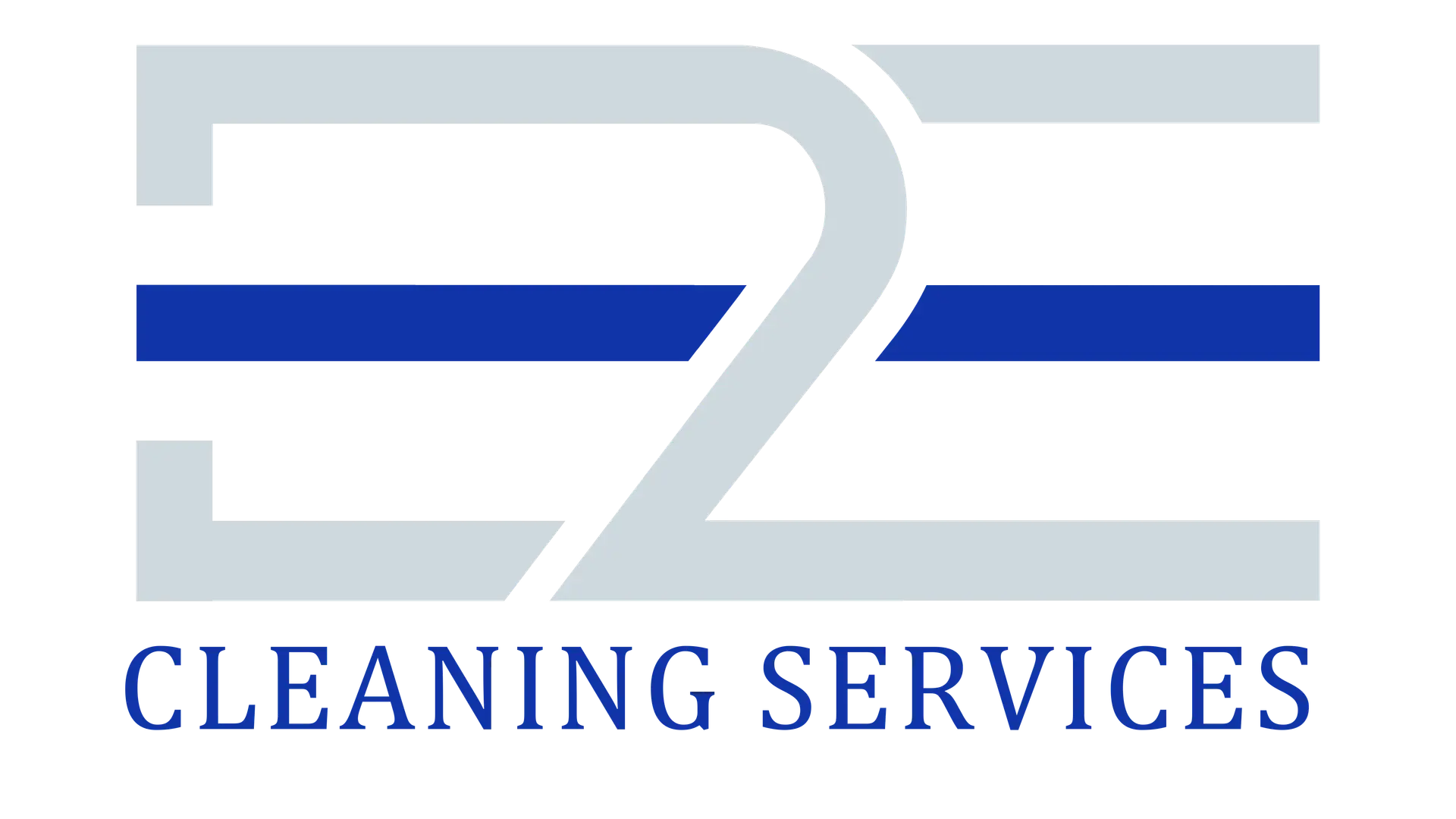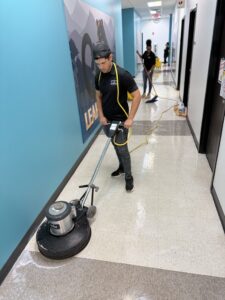This is a guide that helps business owners to undestand the importance of professional janitorial services in maintaining healthy, compliant, and efficient businesses.
It discusses issues related to choosing qualified contractors and budgeting to quality control measures and provides practical information on how to handle commercial cleaning requirements in various industries.
Understanding the Value of Professional Janitorial Services
These services are no longer limited to the traditional housekeeping services and evolved to become an essential component of any business operation that affects workplace health, regulatory compliance, facility life, and customer perception.
Our own experience has shown that companies that invest in professional janitorial services have reduced employee absenteeism, extended life of building infrastructure and increased client favorability.
The pandemic has permanently shifted the expectations of the population, and 89 % of consumers are now considering cleanliness a determinant factor in choosing which businesses to visit. This development has re-categorized janitorial services as an operational cost to a strategic investment.
Poor cleaning schedules may trigger drastic consequences such as the rapid deterioration of facilities, rising costs of maintenance, violation of regulations, and loss of reputation.
Professional janitorial services provide expert expertise to accommodate a range of facilities, including traditional office space as well as tightly controlled healthcare facilities. Their technicians understand the best agents, methods and frequency regimes of various surfaces and situations.
In addition, they are sensitive to the industry standards and technological advances that improve the effectiveness of cleaning and reduce environmental impact.
To corporate leaders, the recognition of this value proposition involves the re-conceptualization of the janitorial services as an operational resource that protects employees, customers, and physical properties and strengthens brand image.
Commercial Cleaning Service Categories
Commercial cleaning services can be categorized into discrete groups, each of which is meant to address specific business goals:
Daily Maintenance Cleaning: Such services focus on high-touch points, trash removal, vacuuming, and surface cleaning, and are usually done on a frequency of one to several days per week. They are essential for office buildings, retail spaces, and educational facilities that want to maintain a high level of hygiene.
Specialized Cleaning: These services deal with needs that are not part of the regular maintenance:
- Stripping, waxing and polishing of floors
- Extraction and carpet cleaning
- Window and facade cleaning
- High-dusting for vaulted spaces
- Sanitization of kitchen and food service areas
Healthcare Facility Cleaning: Medical facilities require strict following of rules set by OSHA, CDC, and other regulatory bodies. The services provided are terminal cleaning of patient rooms, operating room sanitizing, medical waste disposal, and the entire infection control processes.
Staff should be given special training and certification on handling of blood borne pathogens, proper disinfection procedures, and cross contamination control.
Industrial Cleaning: Manufacturing plants, warehouses and other production environments have unique requirements that are focused on safety and efficiency of operations. Services include heavy-duty degreasing, dust control, hazmat and cleaning of special equipment.
Industrial cleaners should know the safety procedures of machinery and they should regularly use pressure washers and industrial vacuums.
Emergency and Restoration Cleaning: These reactive services are used to respond to unexpected situations such as water damage, fire restoration, biohazard containment and disaster recovery. Immediate action is essential, which requires 24/7 access and the application of special remediation tools.
Understanding these differences will help business owners to determine the services that suit their particular business needs and requirements.
Selecting and Evaluating Cleaning Contractors
When choosing a janitorial contractor, the process must go beyond simply gathering price quotations and involve thorough scrutiny. A thorough screening of relevant credentials, references and industry experience is essential.
Certifications and Compliance: Potential customers who require janitorial services should first ensure that the company is operating legitimately by having a valid license, adequate insurance cover, including general liability and workers compensationand appropriate bonding to cover theft and damage.
Even though detailed qualifications are not always essential to small facilities, certifications enhance credibility and emphasize professional expertise. In highly specific industries, like the healthcare or food service, specific certifications and training in the industry are important.
Potential employers are thus advised to match certification demands to facility-based requirements but at the same time give preference to those qualifications that will promote reliable business partnerships.
These are a few certifications types e.g., GBAC (Global Biorisk Advisory Council) certification, ISSA (International Sanitary Supply Association) membership, CIMS (Cleaning Industry Management Standard) certification, and industry-specific training in healthcare, food service, or other disciplines.
Evaluation Process: Potential customers are advised to seek and call references of organizations whose facilities have requirements that are similar to theirs. In interviews, check the level of the contractor knowledge of industry-specific requirements and ask questions regarding quality-control measures, employee-training programs, and communication strategies.
Check the inventory of equipment and cleaning supplies of the contractor and make sure that commercial-grade products are suitable to the facility when used. The professional contractors must also be in a position to discuss their cleaning processes, chemical safety procedures, and methods of keeping abreast with the industry trends.
Essentials of a Contract: A thorough janitorial contract should outline the scope of the work including the frequency of tasks and the standards attached to it.
- Specify staff required
- Process of conducting background checks
- Outline the communication procedures
- Provide contact details
- Describe the quality assessment and performance measures
- Outline the pricing structure, along with any possible extra charges
- Outline the cancellation policy and dispute resolution process
- Provide compliance guarantees to all applicable laws
Warnings: Watch out when contractors provide quotations without conducting a detailed walktrough of the facility or when they cannot explain their quality-control procedures in a clear fashion.
Work with certified professionals. Click Here
Budgeting and Cost Considerations
The management of janitorial expenses requires a clear understanding of the factors that influence the costs of cleaning and the realization of the worth a good cleaning regime brings.
Pricing Structures: The four common pricing mechanisms used by cleaning services are:
- Pricing by square footage- pricing that is often used on routine services.
- Hourly rates, which are usually chosen when a specific activity is conducted or a single task is performed.
- Task-based pricing is based on individually cleaning activities.
- Performance based contracts-in which payment is tied to quality measures that are specified.
Prices for office cleaning services can vary significantly depending on a facility’s specific needs, its geographical location and industry norms. Facilities within the healthcare industry, such as hospitals, often require a greater investment due to strict regulations and the need for specific training.
On the other hand, traditional office buildings tend to offer more flexible price models. The main goal in both settings should be to find a provider that will be able to meet specific needs and maintain the professional standards on a regular basis.
Cost Variables: There are various factors that have significant impact on cleaning costs:
- Size and complexity of facilities
- Cleaning frequency (daily, weekly, monthly)
- Floor type (carpet maintenance is not the same as hard surfaces)
- Occupancy and use patterns
- Special needs (e.g. medical-related procedures, security clearances).
Hidden Costs: There are always hidden costs that come up when the contract specifications are not properly defined. Such hidden costs can consist of:
- Supplies that are consumable and not covered by the base contract
- After-hours or emergency service charges
- Maintenance or replacement of equipment
- Extra costs of special work
- Costs of staff turnover (re-certifications, re-training, security clearances)
- Overhead due to changes in payroll
Return on Investment: In assessing the costs of cleaning, tangible and intangible returns should be taken into consideration:
- Increased life of facilities and assets (floor coverings, fixtures, machinery)
- Reduced absenteeism of employees in a healthier workplace
- Reduced costs of maintenance and repair
- Increased customer perceptions and satisfaction
- Decreased possibility of compliance breaches and corresponding fines
- Increased reputation as a good, clean business.
Therefore, professional cleaning should not be considered a cost, but rather a preventive measure. For every dollar spent on proper cleaning, three to five dollars are normally saved in the long term through reduced repair costs, improved employee output and increased customer retention.
Industry-Specific Cleaning Requirements
The cleaning procedures that have to be followed in business environments vary significantly depending on the regulatory requirements, business needs, and customer demands.
Healthcare facilities: Medical settings have the highest cleaning standards, and are regulated by various organizations, including the Centers for Disease Control and Prevention (CDC), the Occupational Safety and Health Administration (OSHA) and The Joint Commission. These guidelines deal with:
- Terminal cleaning between patient occupancies;
- High-touch surfaces should be properly cleaned and disinfected using hospital-grade disinfectants
- Disposal and management of biohazard wastes
- The use of colour-coded equipment to prevent cross-contamination
- Cleaning activities are documented to ensure compliance
Healthcare cleaners should receive intensive training on the principles of infection control, work with blood-borne pathogens, and proper use of personal protective equipment.
For the Healthcare sector documentation requirements are heavy, while numerous facilities have implemented ATP testing systems to ensure sanitary conditions on the microbial level.
Office and commercial buildings: Commercial offices are not as regulated as healthcare facilities, but commercial offices still need to be built to standards that safeguard occupant health and productivity. Such standards include:
- Inspection and cleaning of ventilators as a means of managing air quality
- Common area allergen-reduction measures
- Specific cleaning of common areas in meeting rooms and break areas
- Technology surfaces like computers and mobile devices are treated with specialised treatments
More and more offices have introduced day porter cleaning programs which run during normal working hours while using quiet machines and non-disruptive cleaning techniques that ensures no disruption to the daily business operations.
These programs have shown measurable improvements in energy consumption by reducing HVAC and electronic equipment over usage, while making occupants more aware of the cleaning processes.
Food service and retail environments: The customer-facing activities require a balance between beauty and cleanliness and the protocols used in such environments should be oriented towards both. Such protocols are:
- Cleaning of customer touchpoints such as door handles and counters on a regular basis
- Dining sanitation processes that are food-safe
- Frequent cleaning of the bathrooms
- Lobby and floor cleaning to form initial impressions
- Deep cleaning of food preparation areas after hours
Retail stores, especially, have been found to be positively impacted by routine deep-cleaning of surfaces, with research indicating that these services have a direct effect on customer perception of the cleanliness of a store, and its overall quality.
Industrial settings: Manufacturing and warehouse facilities are focused on safety and efficiency in operations, and they must have protocols that deal with:
- Dust control to avoid contamination of machines
- Chemical and oil spill response procedures
- Intensive degreasing of working surfaces
- Flooring codes that suit heavy traffic equipment
- Contractors who have particular knowledge, equipment and training pertinent to industry standards.
The best cleaning programmes are tailored to the specific risks, needs and priorities of individual business sectors.
Quality Control and Performance Management
The successful provision of janitorial services is associated with the development of a clear quality criteria and the implementation of standardized monitoring procedures to a great extent.
Establishing Measurable Standards: The process of quality control should begin with the formulation of measurable cleaning standards. They may include:
- Specific lists of tasks, including the frequency of the completion
- Surface cleanliness requirements, founded on objective visual inspection requirements
- Quantitative measurements (e.g. ATP testing in healthcare settings)
- Emergency call service-response time requirements
- Documentation-completion requirements
These standards should be specific to the specific needs of the facility; restrooms, to take one example, might require hourly inspection during operating hours, and general office spaces might require daily cleaning and weekly deep-cleaning schedules.
Monitoring Methods: There are many ways to ensure that cleaning quality remains constant:
- Routine inspections with a standardarized checklists
- Photo verification in the digital documentation systems
- Completion rate trackingfor the quality control software
- Third party inspections to give objective assessments
- Mechanisms of customer and employee feedback
Cleaning programmes are becoming more modern, where QR-code systems are being used to allow cleaning personnel to document the completion of tasks, and management to have a real-time view of service delivery.
Performance Management: In the event of service shortcomings, there is a well-defined procedure that makes sure that they are addressed quickly:
- Classify and record certain shortcomings with facts on the ground
- Raise issues using the available channels
- Ask to have corrective action plans that have well spelt out timelines
- Plan follow up inspection to check improvements
- Enforce penalty on non-performance
Good contracts are those that contain performance clauses that are linked with quality measures. There are organisations that demand that contractors correct deficiencies within specific periods of time or be penalised financially.
Continuous Improvement: The quality control must not only be limited to problem identification but also to the systematic improvement of the underlying processes. Quarterly reviews with cleaning partners should cover:
- Reoccurring trend of issues
- Staff training requirements and development
- Systemic problem improvements to process
- Upgrades of technology or equipment that increases efficiency
- Changing facility needs due to changing operations
The most effective cleaning programmes develop cooperative relationships where contractors are treated as partners in achieving facility standards instead of vendors to be controlled.
Conclusion
Professional cleaning services are a critical investment in business, facilities and brand image. By having a clear idea of what services are available, having in place strict contractor selection procedures, setting proper budgets and having in place effective quality-control procedures, business owners can ensure that their cleaning programs are providing maximum value.
The contemporary cleaning sector is in constant development, bringing new technologies and approaches that enhance efficiency, sustainability, and effectiveness.
Proactive organizations must consider their cleaning contractors to be business partners in the management of healthy and productive environments instead of being viewed as commodity service providers.
Essentially, the correct janitorial service program protects the most valuable resources of any organization, people, facilities, and reputation, and increases the efficiency of the operation and compliance with the applicable regulations. Complying with the principles outlined in this guide, business owners can turn the facility cleanliness into a strategic asset.






